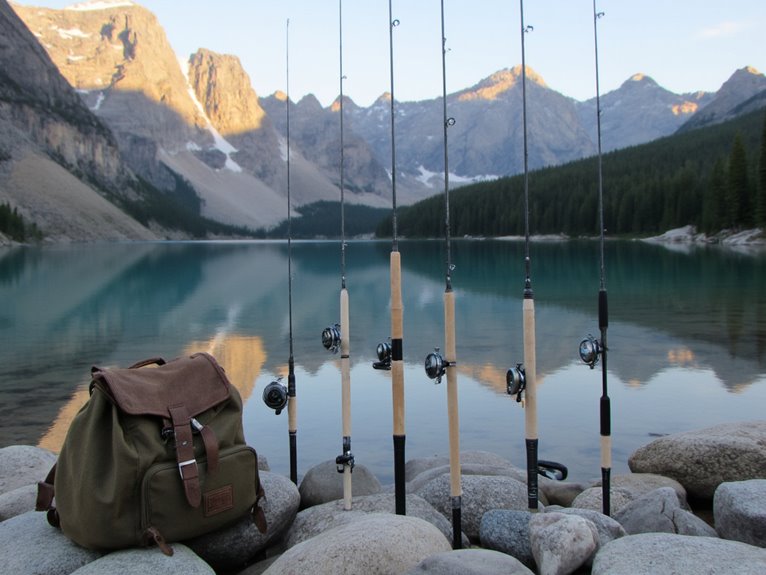Can You Ride a Bike With a Backpack?
Riding a bike with a backpack is possible, but it requires careful consideration of the bike's geometry, the backpack's size and weight distribution, and the rider's experience and skill level. A compatible bike and backpack setup is essential, as a mismatch can lead to discomfort, compromised safety, and reduced performance. Weight and balance considerations are imperative, with proper load distribution and management of the center of gravity shift caused by the added weight. To facilitate a comfortable and safe ride, riders should consider alternative solutions and options that cater to their specific needs, and discover how to optimize their bike and backpack setup for a harmonious ride.
We are supported by our audience. When you purchase through links on our site, we may earn an affiliate commission, at no extra cost for you. Learn more. Last update on 1st January 2026 / Images from Amazon Product Advertising API.
Bike and Backpack Compatibility
When selecting a bike and backpack for a ride, it's essential to guarantee compatibility between the two, as a mismatch can lead to discomfort, compromised safety, and reduced performance.
A bike's geometry, seat height, and handlebar style must complement the backpack's size, shape, and weight distribution.
For instance, a road bike with drop handlebars may not pair well with a bulky backpack, while a mountain bike with upright handlebars may accommodate a larger pack.
Consider the backpack's suspension system, too, as it should work in harmony with the bike's suspension to guarantee a smooth ride.
Weight and Balance Considerations
When riding a bike with a backpack, weight and balance considerations are vital to guarantee a safe and enjoyable ride.
The key to maintaining stability lies in achieving ideal load distribution and managing the center of gravity shift caused by the added weight of the backpack.
Load Distribution Matters
Proper load distribution is crucial when riding a bike with a backpack, as uneven weight distribution can throw off your balance and compromise your control on the bike.
A well-packed backpack should have a balanced load, with heavier items placed closer to your back and centered around your spine.
This guarantees that the weight is evenly distributed, allowing you to maintain control and balance while riding.
Additionally, consider the size and shape of your backpack, as a larger or irregularly shaped pack can affect your balance and visibility.
Center of Gravity Shift
As you adjust the load distribution of your backpack, it's just as vital to think about how the weight and balance of your pack affect your bike's center of gravity, which can greatly impact your overall stability and control on the road.
A higher center of gravity can make your bike more prone to tipping or swaying, especially when cornering or braking.
Conversely, a lower center of gravity provides more stability and better handling.
To mitigate this, consider packing heavier items at the bottom of your backpack and closer to your body.
This will help maintain a lower center of gravity and provide a more balanced ride.
Rider Experience and Skill Level
Riders with more experience and skill tend to adapt to the added weight and changed balance point of a backpack more easily, allowing them to maintain their usual riding style and confidence.
They're more familiar with their bike's handling, so they can compensate for the extra load and adjust their riding technique accordingly.
In contrast, less experienced riders may struggle to adapt, as the added weight can throw them off balance and affect their confidence.
It's essential for beginners to start with shorter rides and lighter loads, gradually increasing their endurance and skill level.
With practice and patience, they can develop the necessary skills to ride comfortably with a backpack.
Backpack Size and Type Matters
When selecting a backpack for biking, the size and type of pack can substantially impact the ride, with larger or bulkier packs affecting balance and maneuverability more drastically than smaller, sleeker designs.
To ensure a comfortable and controlled ride, consider the following factors when choosing a backpack:
- Volume: Opt for a pack with a capacity that matches your needs, avoiding excess bulk.
- Shape: Look for a slim, aerodynamic design that won't obstruct your movement.
- Weight distribution: Choose a pack with strategically placed compartments to evenly distribute weight.
- Strap system: Ensure the shoulder straps and waist belt are adjustable and comfortable.
- Material: Select a pack made from lightweight, breathable materials that won't weigh you down.
Safety Precautions and Hazards
When riding with a backpack, cyclists should be aware of several potential hazards to guarantee a safe and enjoyable journey.
One major concern is reduced visibility, as a bulky backpack can obstruct the rider's peripheral vision.
Additionally, the added weight and bulk can affect bike handling, making it more difficult to maneuver, especially at high speeds or on uneven terrain.
Cyclists should also be mindful of loose straps or zippers that could get caught in the bike's moving parts.
Moreover, a heavy backpack can cause fatigue, leading to decreased reaction time and poor decision-making.
Alternative Solutions and Options
Riding a bike with a backpack can be made more enjoyable with alternative solutions and options available that can improve comfort, safety, and overall riding experience.
Wearable bike bags, for instance, offer a more ergonomic and balanced way to carry gear, while bike-friendly backpacks are designed with cyclists in mind.
Additionally, other carrying options such as bike-mounted baskets, trailers, and panniers provide cyclists with a range of choices to suit their specific needs.
Wearable Bike Bags
Wearable bike bags, such as hydration packs and cycling vest packs, offer a convenient alternative to traditional backpacks, providing easy access to essential items while keeping your hands free to navigate the road or trail.
These innovative solutions allow riders to carry gear without the bulk of a backpack, ensuring a more comfortable and agile ride.
Some key benefits of wearable bike bags include:
- Easy access to snacks, tools, and other essentials
- Increased mobility and comfort during long rides
- Adjustable compartments for customizable storage
- Breathable materials for improved ventilation
- Reflective strips or bright colors for improved visibility
Bike-Friendly Backpacks Available
Many riders opt for bike-friendly backpacks that cater specifically to cycling needs, offering a range of innovative features and clever designs that prioritize comfort, accessibility, and visibility.
These backpacks usually have ventilated back panels, padded shoulder straps, and multiple compartments to keep essentials organized.
Some models feature reflective strips or bright colors to increase visibility, while others have built-in hydration systems or phone pockets for easy access.
Look for backpacks with adjustable torso lengths and hip belts to guarantee a snug, comfortable fit.
Brands like Osprey, CamelBak, and Thule offer high-quality, bike-friendly backpacks that can make your ride more enjoyable and convenient.
Other Carrying Options
Beyond traditional backpacks, cyclists can investigate alternative carrying options that cater to their specific needs and preferences. These options can provide a more comfortable, convenient, and secure way to transport gear while riding.
Some popular alternative carrying options include:
- Front baskets: Attached to the handlebars, these baskets provide easy access to essentials like phones, snacks, and maps.
- Rear racks: Mounted above the rear wheel, these racks can hold panniers, baskets, or bags, keeping gear organized and within reach.
- Saddlebags: Small bags attached under the saddle, ideal for carrying tools, tubes, and other small items.
- Frame bags: Mounted directly to the bike frame, these bags provide storage for larger items like jackets, gloves, and water bottles.
- Trailer attachments: For heavier or bulkier loads, trailer attachments can be a convenient and comfortable solution.



